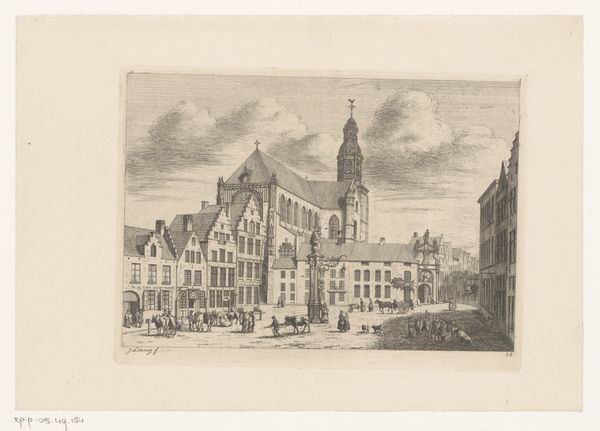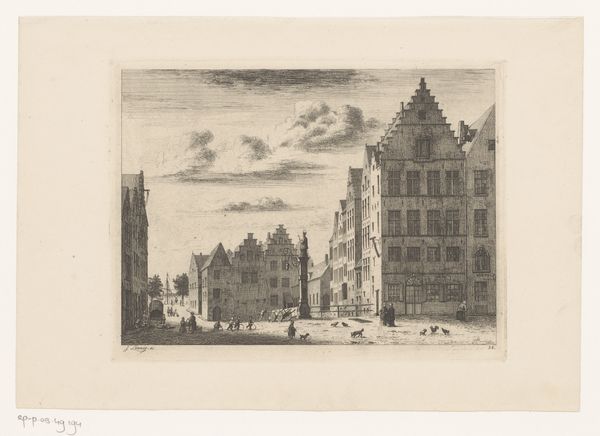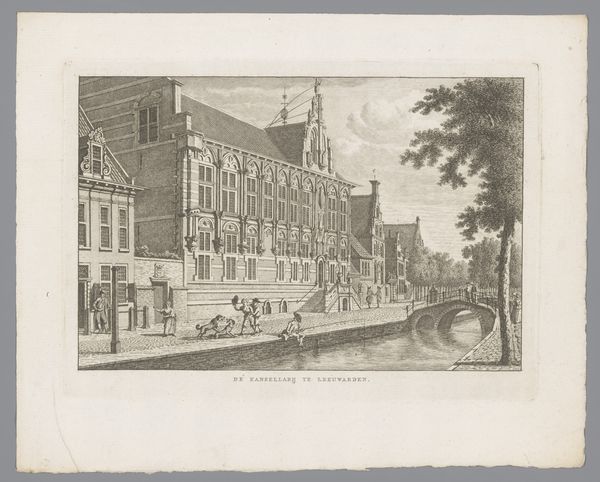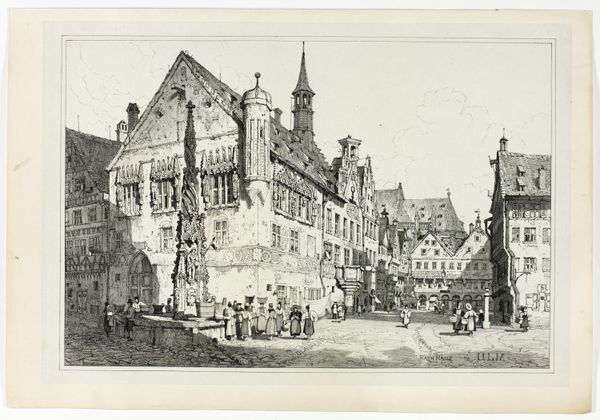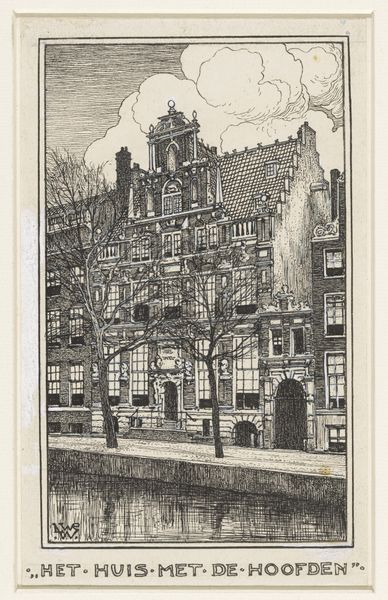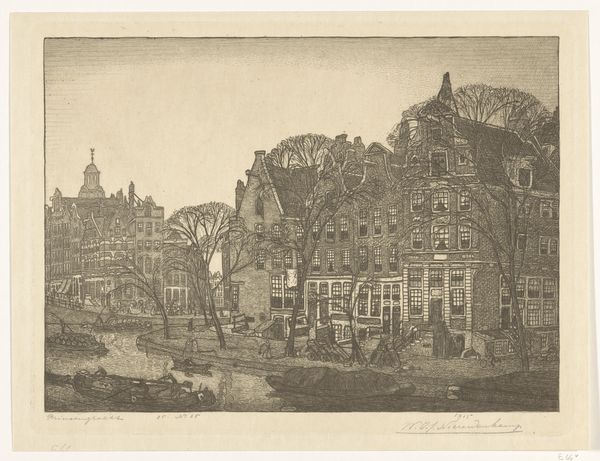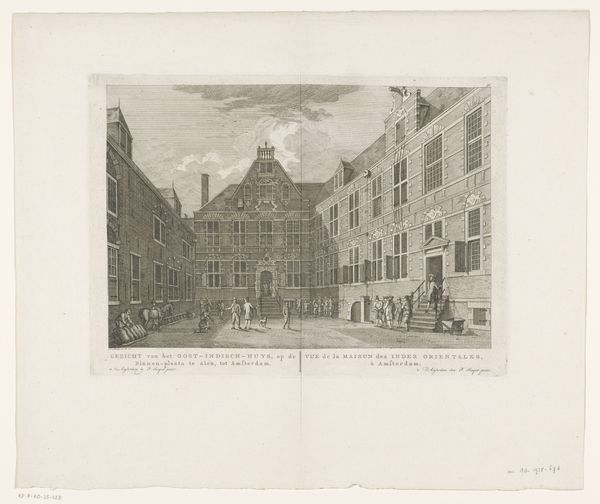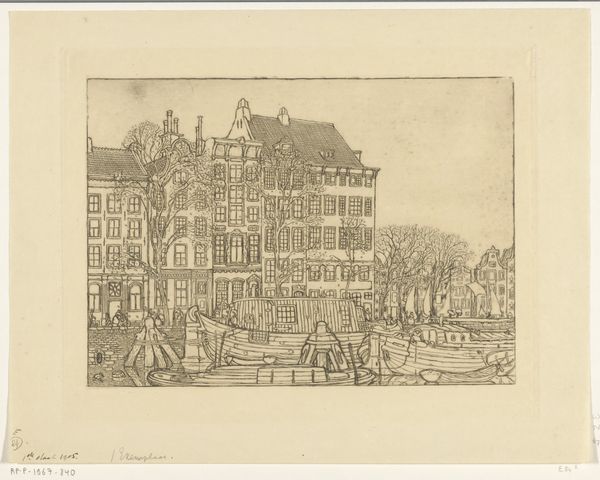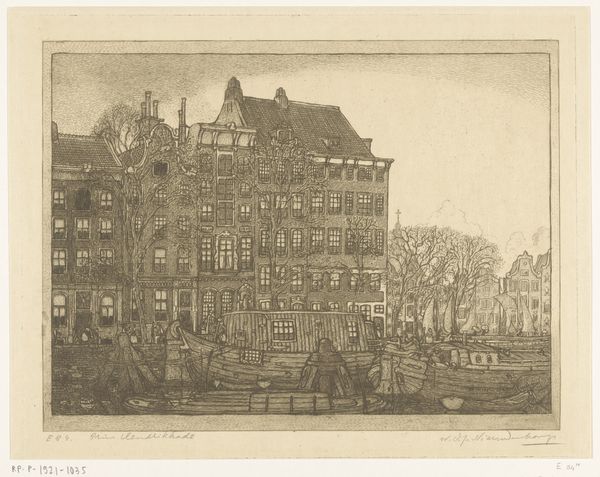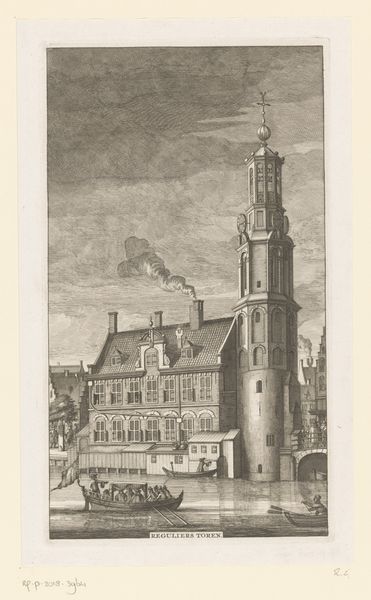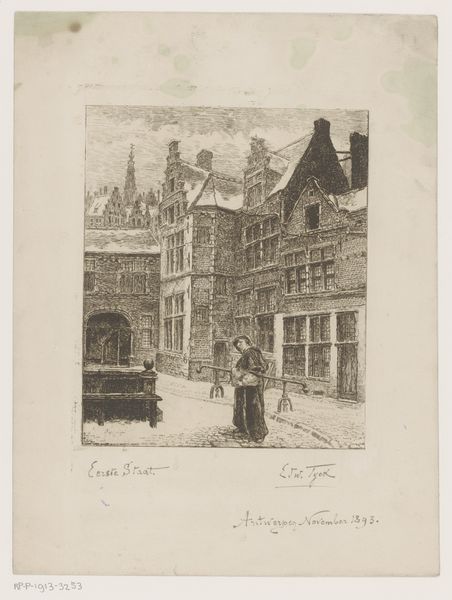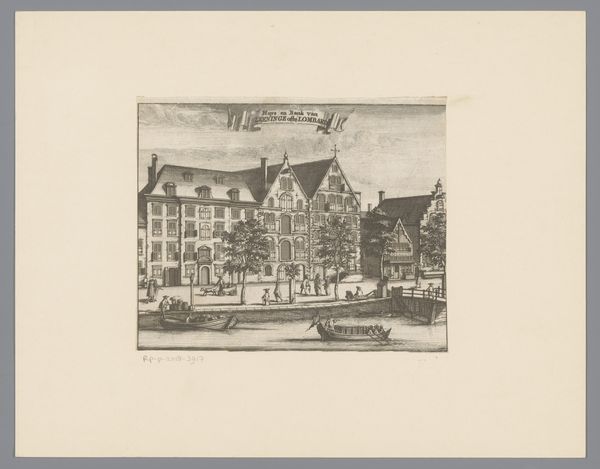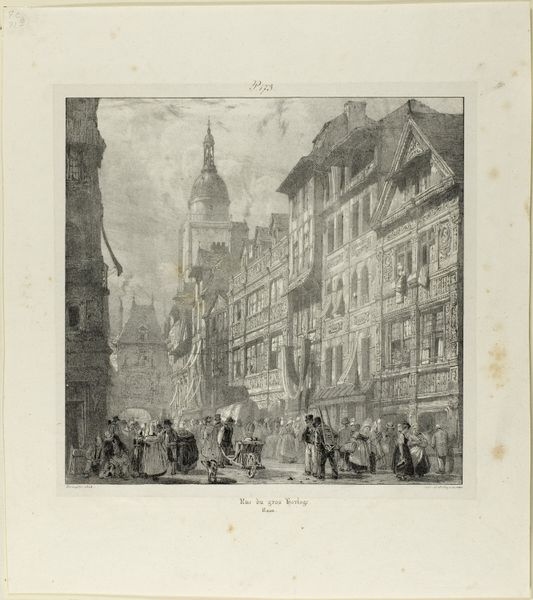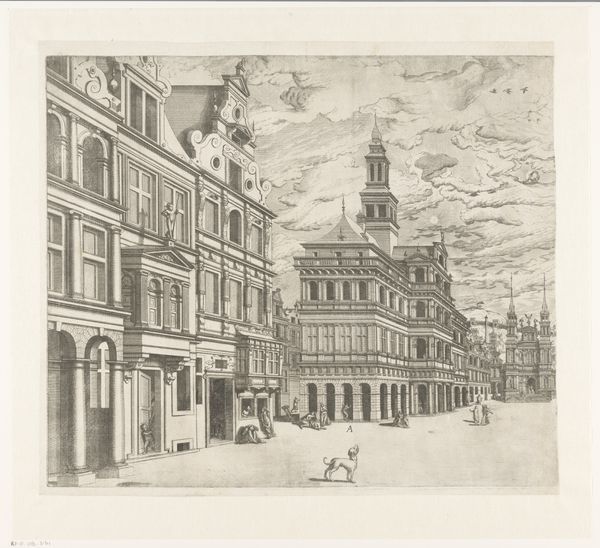
Dimensions: height 348 mm, width 544 mm
Copyright: Rijks Museum: Open Domain
Octave Guillaume de Rochebrune made this print of the Château de Blois using etching, a printmaking technique steeped in tradition. The process begins with a metal plate, coated in a waxy, acid-resistant ground. The artist then scratches an image into this ground, exposing the metal beneath. When the plate is submerged in acid, the exposed lines are eaten away, creating grooves. Ink is then applied to the plate, filling these grooves, and the surface is wiped clean. Finally, the plate is pressed onto paper, transferring the inked image. The dense network of lines is built through labor, and suggests the history of craftsmanship in the depicted architecture. Etching enabled the wide distribution of images, fueling an appetite for picturesque views and historical landmarks, like this very courtyard. The labor of production mirrors the work of stonemasons, as the level of detail indicates a deep appreciation for architectural grandeur. By focusing on the materials and making of this print, we can see how traditional crafts intersect with commerce and culture, blurring the boundaries between art, production, and historical preservation.
Comments
No comments
Be the first to comment and join the conversation on the ultimate creative platform.
